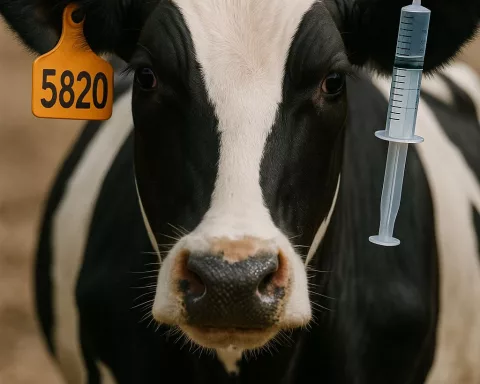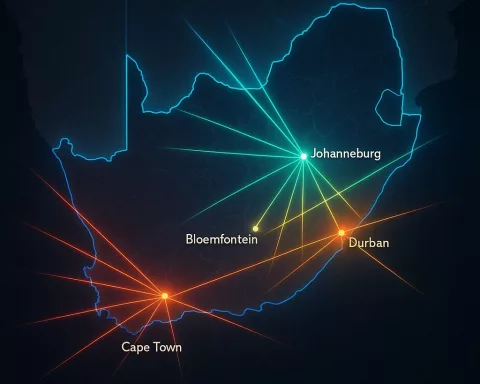Central banks can impact climate policy coordination by understanding how climate change affects their responsibilities, mitigating policy planning and coordination risks, and avoiding excessive interference due to policy failures. They must consider the effects of climate change on the economy when developing monetary policy. To support the green transition, central banks should maintain financial and price stability, provide analytical support, and address financial market data inconsistencies. They can work with governments to minimize unintended side effects and optimize employment benefits.
What is the role of central banks in tackling climate change?
Central banks can impact climate policy coordination by comprehending how climate change influences their responsibilities, mitigating policy planning and coordination risks, and preventing excessive interference due to policy failures. They must take into account the effects of climate change on the economy when devising monetary policy. To facilitate the green transition, central banks should uphold financial and price stability, generate analytical work, and tackle financial market data discrepancies. They can contribute to the global effort against climate change by collaborating with governments.
Central Banks’ Role in Tackling Climate Change
In light of the severe floods that occurred in KwaZulu-Natal, South Africa, in 2021, and subsequent extreme weather events across the globe, conversations surrounding urgent action to tackle climate change have gained momentum. As the world inches closer to critical climate tipping points, central banks find themselves increasingly involved in policy discussions about climate change and its economic implications.
Central banks can significantly impact climate policy coordination by concentrating on three primary areas: comprehending the ways in which climate change influences their core responsibilities, mitigating the risks of policy planning and coordination failures, and steering clear of excessive interference brought about by policy challenges.
Climate change influences economies through various supply and demand pathways, often resulting in long-lasting and irreversible consequences. For example, extreme heat can raise mortality and morbidity rates, diminish the skills base, and trigger mass migration, crime, and civil unrest. These effects require nations to cut down on greenhouse gas emissions while simultaneously enhancing their economies’ ability to withstand climate change-related repercussions. Central banks must take these factors into account when devising monetary policy and overseeing the financial sector.
Reducing Policy Design and Coordination Failures
To mitigate the risks associated with policy design and coordination failures, central banks ought to focus on preserving macroeconomic stability. In the context of climate change, fiscal decisions frequently pose threats to emerging and developing economies. Governments must place a premium on investing in infrastructure and cultivating new skills to propel economic growth. Additionally, tax systems should address the minimal costs of generating greenhouse gas emissions, such as through carbon taxation and tax incentives for cleaner technologies.
Preventing excessive interference due to policy failures entails central banks acknowledging the primary drivers of a green transformation. These drivers consist of relative price changes that prompt households and firms to consume and invest in eco-friendlier products and services, novel technologies that lower adaptation and mitigation expenses, and infrastructure that is more resistant to extreme weather events. Central banks’ tools cannot directly influence these elements.
Supporting the Green Transition
To facilitate the green transition, central banks should uphold financial and price stability, generate analytical work to inform policy decisions, and tackle financial market data discrepancies. Well-thought-out and synchronized government actions can result in an organized green transition while minimizing unintended side effects. For example, policy measures that assist workers in acquiring new skills and transitioning to environmentally friendly firms optimize employment benefits.
Central banks can advance climate change-related goals and aid the transition by ensuring macroeconomic stability and providing analytical support. By maintaining price and financial stability, generating high-quality research, and addressing financial market data inconsistencies, central banks can foster an environment conducive to green financing, investment in cutting-edge technologies, and a shift in consumption patterns.
In summary, central banks can play a pivotal role in the climate transition by concentrating on their core responsibilities and collaborating with governments as part of a broader response. By upholding financial and price stability, generating analytical work, and tackling financial market data discrepancies, central banks can effectively contribute to the global effort against climate change.
1. What is the role of central banks in tackling climate change?
Central banks can impact climate policy coordination by comprehending how climate change influences their responsibilities, mitigating policy planning and coordination risks, and preventing excessive interference due to policy failures. They must take into account the effects of climate change on the economy when devising monetary policy. To facilitate the green transition, central banks should uphold financial and price stability, generate analytical work, and tackle financial market data discrepancies. They can contribute to the global effort against climate change by collaborating with governments.
2. How does climate change affect the economy?
Climate change influences economies through various supply and demand pathways, often resulting in long-lasting and irreversible consequences. For example, extreme heat can raise mortality and morbidity rates, diminish the skills base, and trigger mass migration, crime, and civil unrest. These effects require nations to cut down on greenhouse gas emissions while simultaneously enhancing their economies’ ability to withstand climate change-related repercussions.
3. How can central banks mitigate policy design and coordination failures?
To mitigate the risks associated with policy design and coordination failures, central banks ought to focus on preserving macroeconomic stability. In the context of climate change, fiscal decisions frequently pose threats to emerging and developing economies. Governments must place a premium on investing in infrastructure and cultivating new skills to propel economic growth. Additionally, tax systems should address the minimal costs of generating greenhouse gas emissions, such as through carbon taxation and tax incentives for cleaner technologies.
4. How can central banks prevent excessive interference due to policy failures?
Preventing excessive interference due to policy failures entails central banks acknowledging the primary drivers of a green transformation. These drivers consist of relative price changes that prompt households and firms to consume and invest in eco-friendlier products and services, novel technologies that lower adaptation and mitigation expenses, and infrastructure that is more resistant to extreme weather events. Central banks’ tools cannot directly influence these elements.
5. How can central banks support the green transition?
To facilitate the green transition, central banks should uphold financial and price stability, generate analytical work to inform policy decisions, and tackle financial market data discrepancies. Well-thought-out and synchronized government actions can result in an organized green transition while minimizing unintended side effects. For example, policy measures that assist workers in acquiring new skills and transitioning to environmentally friendly firms optimize employment benefits.
6. What should governments do to address climate change?
Governments must place a premium on investing in infrastructure and cultivating new skills to propel economic growth. Additionally, tax systems should address the minimal costs of generating greenhouse gas emissions, such as through carbon taxation and tax incentives for cleaner technologies.
7. How can central banks contribute to green financing?
Central banks can contribute to green financing by maintaining price and financial stability, generating high-quality research, and addressing financial market data inconsistencies. This can foster an environment conducive to green financing, investment in cutting-edge technologies, and a shift in consumption patterns.
8. How can central banks collaborate with governments in the fight against climate change?
Central banks can collaborate with governments as part of a broader response to the climate crisis. By upholding financial and price stability, generating analytical work, and tackling financial market data discrepancies, central banks can effectively contribute to the global effort against climate change.








